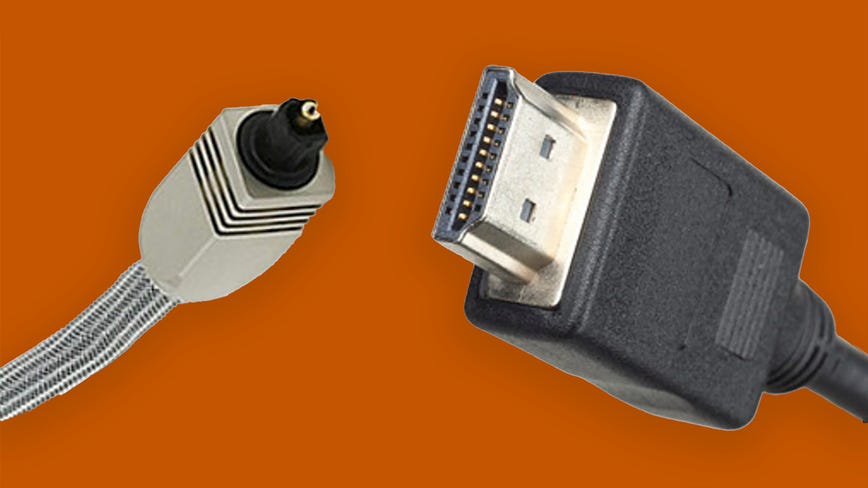HDMI vs. Optical: Which Digital Audio Connection to Use?

Monoprice/HDMI.org
When it comes time to connect your shiny new soundbar or AV receiver, your two main choices are HDMI or optical digital audio.
The simplest advice is to go with HDMI when you can. But if you can’t then it’s not the end of the world.
Here are the pros and cons of each connection type.
The basics
Both HDMI and optical pass digital audio from one device to another. Both are better than analog (the red and white cables). Both can pass multi-channel audio, like Dolby Digital. Both cables can be had pretty cheap.
The biggest difference is that HDMI can pass higher-resolution audio, including the formats found on streaming services such as?Dolby Atmos?and?DTS HD Master Audio. These formats can’t be transmitted across optical.
In terms of simplicity, HDMI also passes video signals. So if you want just a single cable between two devices, HDMI (using ARC) is your pick.
Related Stories
- Best TV for 2022
- Should I upgrade my HDMI cables for Xbox or PS5 gaming, 8K or my new TV?
- Your TV screen could be even bigger
- 4K and 8K TV refresh rates from 60hz to 120Hz: Everything you should know
Optical is fine
Depending on your gear, you might not have the option for HDMI. Maybe you have an older receiver. Maybe you have everything connected to your TV, and you just want to get the audio out to a soundbar (and the only option is optical).
In that case, optical is fine. Don’t sweat not being able to connect with HDMI. For most setups, the sound will be just as good with optical as with HDMI.
One complication is if you have a soundbar, like the Sonos Ray, which can benefit from a surround sound signal and you connect it to one of the many TVs that can’t pass such a signal via its optical outputs. Soundbars like the Ray don’t have HDMI inputs anyway, so the best way to connect them is directly from the source to the bar via optical, skipping the TV. That, or get a new TV.
When does HDMI work best?
Regardless of the gear you use, as mentioned there’s also no way to get Dolby Atmos or DTS HD Master Audio with an optical connection. However, that’s not a huge deal.
While there is a difference between Dolby Digital and those high-res lossless formats, the difference isn’t as pronounced as you might expect. On a decent home theater system, with quality speakers, you might notice that the high-res formats are a little more open, a little smoother sounding.
On lesser gear, it’s a lot less likely you’ll hear a difference. Most soundbars, for example, lack the fidelity to do anything with the additional resolution. Many don’t accept those formats at all.
Bottom line
Use HDMI when you can. The cables are cheap, and having just one wire simplifies setup. If you can’t, optical is fine. If your gear doesn’t have HDMI, it can’t take advantage of the high-resolution audio formats from streaming services anyway. On the other hand Dolby Digital is surprisingly good, and unless you have decent gear, you probably won’t hear much (if any) improvement with Dolby Atmos and DTS HD MA.
Got a question for Geoff? First, check out all the other articles he’s written on topics such as why all HDMI cables are the same, LED LCD vs. OLED, why 4K TVs aren’t worth it and more. Still have a question? Tweet at him@TechWriterGeoff then check out his travel photography on Instagram. He also thinks you should check out his sci-fi novel and its sequel.